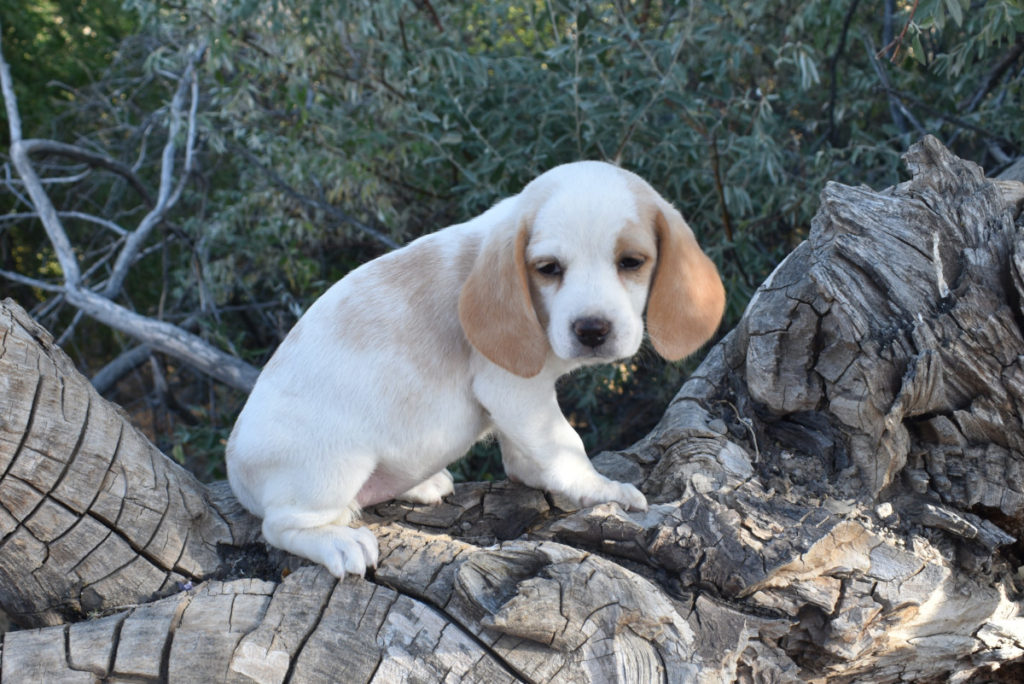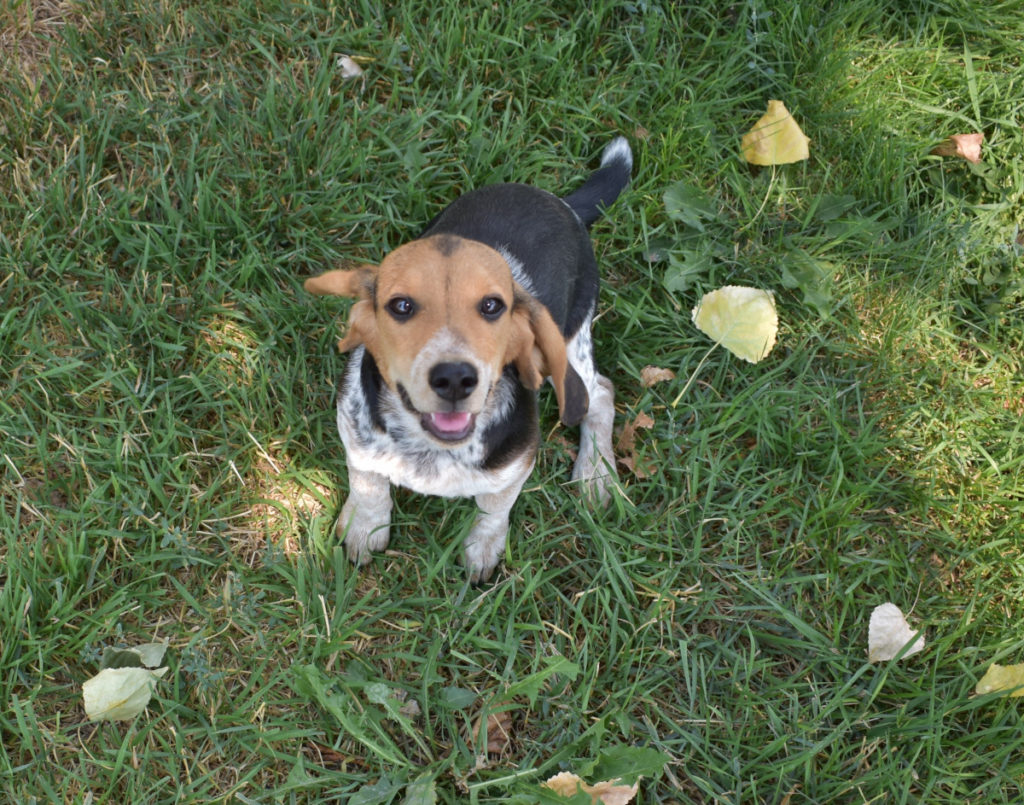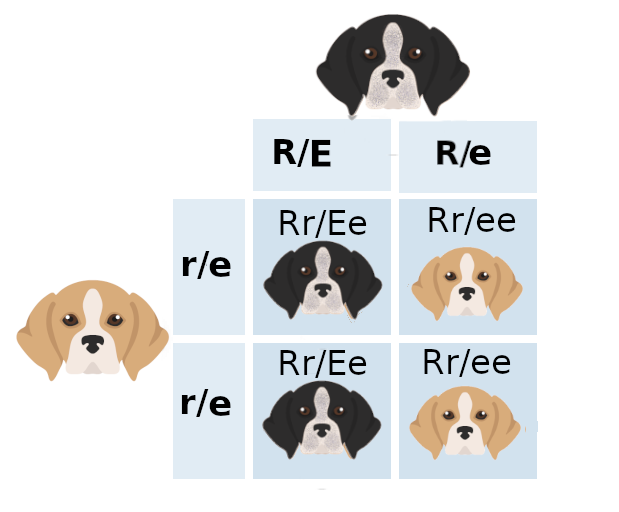Is there such a thing as a blue tick lemon Beagle? If you been around Beagles, then you already know that they come in different sizes and colors. Of the many colors they come in, two fairly common colors are the blue tick and the lemon.


So what would happen if we were to cross these two types of Beagles? Is there a chance that they could end up with a blue tick lemon Beagle?
Genetically speaking, yes it is possible to get a Beagle that contains all the genes for a lemon blue tick.
However, just because a Beagle could have all of the right genetics, that does not mean that they will physically express those genes.
If fact it is impossible to physically get an outward appearance of a blue tick lemon Beagle.
Why?
Well to fully answer that question, let me first talk about the genetic makeup of such a Beagle.
Blue Tick Lemon Beagle, Breaking Down the Genetics!
There are different genes that are responsible for a Beagles fur color. To name a few they are:
- B-Locus: Responsible for a brown versus black coat.
- It takes two recessive genes to produce a brown coat.
- D-Locus: Responsible for a diluted coat color.
- It takes two recessive genes to get the diluting effect.
- E-Locus: Responsible for yellow/red/cream coat.
- It takes two recessive genes to produce a yellow coat
- R-Locus: Responsible for roaning “blue ticking” coat.
- It takes one dominate gene to produce the roan effect.
From the above list genes, you will see that it is the E-locus gene that is responsible for the yellow coat in a lemon beagle puppy.
You may have also notice that it takes one dominate R-locus gene to get a blue tick beagle puppy.
All lemon Beagles will carry two copies of the recessive E-Locus gene, “ee”. They will pass on one copy of the recessive E-gene to all of their offspring.
Which means, as far as genetics is concerned, getting a blue tick lemon Beagle comes down to the genetic makeup of the adult blue tick Beagle.
What Genetics to Look for in a Blue Tick Beagle?
The pairs of locus genes that your want your blue tick to have are:
- E-Locus: Dominate/Recessive or “Ee”.
- “Ee” at the E-locus level means that your blue tick is a carrier, the little e, of the gene that is responsible for getting a lemon beagle. When the recessive “e” gene from a blue tick combined with a recessive “e” gen of the lemon, the offspring will be “ee” making it a lemon.
- R-Locus: Dominate/Dominate “RR”.
- It only takes one dominate R gene for your Beagle to express the blue tick coat. A Beagle with a Dominate/Recessive “Rr” makeup would express a blue tick coat also. However a Dominate/Dominate “RR” makeup at this level would guarantee that all puppies would receive one copy of the dominate R gene, making them a blue tick as well.
Genetically speaking, breeding a lemon Beagle with a Dominate/Dominate bluetick Beagle who is also a carrier of the lemon gene would give you the genetic makeup you are looking for.
The image below will help illustrate the possible outcome of such a mix.

From the above image, you can see that all of the pups have a least one Dominate R-Locus gene. This would make all of them a blue tick.
Half of the puppies from the above image are “ee” at the E-locus level, which would make them a lemon.
As mentioned earlier, genetically it is possible but an actual blue tick lemon Beagle that expresses these traits is not possible.
Why Doesn’t a Lemon Blue Tick Exist ?
I believe that Embark Vet who are expects in the field of dog genetics, puts it best. They state:
“Dogs with at least one R allele will likely have roaning on otherwise uniformly unpigmented white areas. Roan appears in white areas controlled by the S Locus but not in other white or cream areas created by other loci, such as the E Locus with ee along with Dilute Red Pigmentation by I Locus”
To simplify their statement, the roaning or blue tick gene has no effect on the white area created by the E-locus gene of a lemon Beagle puppy.
So if this is the case, then what would the puppies look like?
If you look back at the above image, the puppies that inherited both recessive E-genes “ee” would be lemons, while the puppies that inherited only one copy of the recessive E-gene “Ee” would be blue ticks.
Conclusion
To wrap in all up, genetically a blue tick lemon Beagle can exist but appearance wise, they do not exist.
This is because the gene that is responsible for producing a blue tick coat, has no effect on the white patches of a lemon coat.
If you run across a breeder that’s claiming to sale such a Beagle, do your research and do not take the bait. Make sure you get your Beagle from a well respected breeder who will be honest with you.
